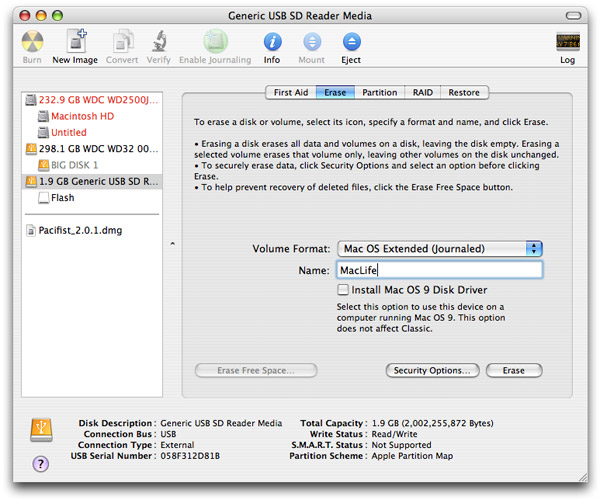


The instructions in super short versionĪfter I just got a message from a reader that he doesn't see the "Scheme" selection in his Disk Utility, I noticed that this has to do with the "Show all devices" view, which you can find in the top left under " Appearance” can be selected. This is how all devices and containers are displayed. After clicking Erase, it only took a few seconds to get the volume in APFS format and install macOS Mojave on it without a murmur.īy the way, if you have a different display in Disk Utility than you can see in the screenshots, you should click on the “View” button in the top left of the program and then select “All Volumes”. I used the "pure" APFS because I didn't want to encrypt the data carrier and I didn't have to differentiate between upper and lower case. Mac OS Extended (case sensitive, journaled, encrypted)Īfter selecting the GUID scheme, APFS can also be selected as the file system format.Mac OS Extended (case sensitive, journaled).Then there are significantly more options: You have to first select "GUID partition table" under "Scheme" in the hard disk utility and then look at "Format" in the upper selection field. Use Disk Utility to change the partition scheme. This hard drive does not use the GUID partition table scheme. When I tried this I got this error message: I finally formatted the SSD in "Mac OS Extended, journaled" format and then wanted to use the macOS Mojave Installer to put the new system on the disk. macOS Mojave only accepts hard drives with a GUID partition table scheme MacOS Mojave can only be installed if the hard disk uses the GUID partition table scheme.


 0 kommentar(er)
0 kommentar(er)
